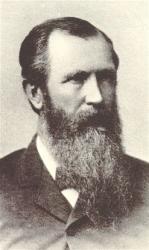Planning worship?
Check out our sister site, ZeteoSearch.org,
for 20+ additional resources related to your search.
- |
User Links
Search Results
How lovely are Thy dwellings fair
Author: John Milton Appears in 58 hymnals Hymnal Title: The Mennonite Hymnal First Line: How lovely are Thy dwellings fair! Topics: The Church The Lord's House Scripture: Psalm 84 Used With Tune: WINCHESTER OLD
How lovely are Thy dwellings fair
[How lovely are thy dwellings]
Appears in 2 hymnals Composer and/or Arranger: R. M. McIntosh Hymnal Title: Light and Life Tune Key: A Major Incipit: 51171 21533 32343 Used With Text: How lovely are thy dwellings
[How lovely are thy dwellings]
[How lovely are Thy dwellings fair]
Appears in 1 hymnal Composer and/or Arranger: Henry Gideon Hymnal Title: New Jewish Hymnal for Religious Schools and Junior Congregations. 8th ed. Tune Key: G Major or modal Incipit: 53243 21765 671 Used With Text: How lovely are Thy dwellings fair
[How lovely are Thy dwellings fair]
How lovely are thy dwellings fair
Hymnal: A Collection of Hymns #129 (1859) Hymnal Title: A Collection of Hymns Languages: English
How lovely are thy dwellings fair
How lovely are thy dwellings fair!
Author: Milton Hymnal: A Collection of Psalms and Hymns for the Sanctuary #51 (1845) Hymnal Title: A Collection of Psalms and Hymns for the Sanctuary Languages: English
How lovely are thy dwellings fair!
How lovely are thy dwellings fair!
Hymnal: Church Hymnal, Fifth Edition #333 (2000) Hymnal Title: Church Hymnal, Fifth Edition
How lovely are thy dwellings fair!
R. M. McIntosh

1836 - 1889 Hymnal Title: Light and Life Composer of "[How lovely are thy dwellings]" in Light and Life Used Pseudonym: Robert M. McIntosh
==========
Rigdon (Robert) McCoy McIntosh USA 1836-1899 Born at Maury County, TN, into a farming family, he attended Jackson College in Columbia, TN, graduating in 1854. He studied music under Asa Everett in Richmond, VA, and became a traveling singing school teacher. He also served briefly in the Civil War. He wrote several hymns during this period of his life. In 1860 he married Sarah McGlasson, and they had a daughter, Loulie Everett. In 1875 he was appointed head of the Vanderbilt University Music Department in Nashville, TN. In 1877 he joined the faculty of Emory College, Oxford, GA. In 1895 he left Emory College to devote his time to the R M McIntosh Publishing Company. He also served as music editor of the Methodist Episcopal Church South Publishing House for over 30 years. His song book publications include: “Good news” (1876), “Light & life” (1881), “Prayer & praise” (1883), “New life” (1879), “New life #2” (1886), and “Songs of service” (1896). He died in Atlanta, GA.
John Perry
R. M. McIntosh
Henry Gideon
Hymnal Title: New Jewish Hymnal for Religious Schools and Junior Congregations. 8th ed. Composer of "[How lovely are Thy dwellings fair]" in New Jewish Hymnal for Religious Schools and Junior Congregations. 8th ed.
Henry Gideon
John Bacchus Dykes

1823 - 1876 Person Name: Dykes Hymnal Title: New Manual of Praise Composer of "LAUD" in New Manual of Praise As a young child John Bacchus Dykes (b. Kingston-upon-Hull' England, 1823; d. Ticehurst, Sussex, England, 1876) took violin and piano lessons. At the age of ten he became the organist of St. John's in Hull, where his grandfather was vicar. After receiving a classics degree from St. Catherine College, Cambridge, England, he was ordained in the Church of England in 1847. In 1849 he became the precentor and choir director at Durham Cathedral, where he introduced reforms in the choir by insisting on consistent attendance, increasing rehearsals, and initiating music festivals. He served the parish of St. Oswald in Durham from 1862 until the year of his death. To the chagrin of his bishop, Dykes favored the high church practices associated with the Oxford Movement (choir robes, incense, and the like). A number of his three hundred hymn tunes are still respected as durable examples of Victorian hymnody. Most of his tunes were first published in Chope's Congregational Hymn and Tune Book (1857) and in early editions of the famous British hymnal, Hymns Ancient and Modern.
Bert Polman
John Bacchus Dykes


 My Starred Hymns
My Starred Hymns


